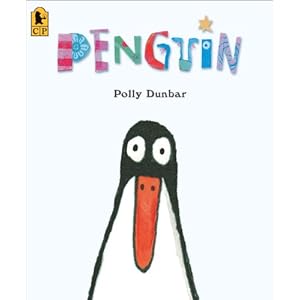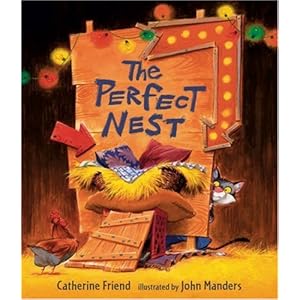Basbusa has been fascinated by the working of the human body for well over a year now, so I've been trying to make plenty of resources of all kinds available to her. As far as books go, it's been hard to find ones that are anywhere near a three-year-old level, but here are our two favorites so far.
The Human Body: Lift the Flap and Learn has interactive flaps and tabs that go way beyond the usual open-and-close type. For example, Basbusa's favorite page shows how food gets processed from mouth to - well, you know where food ends up :) The page has bits of broccoli in various states of digestion that you slide down through the esophagus, then the stomach, and then through the intestines. Finally, there's a pull-tab at the bottom, which you pull downward to reveal the "final product" of all this digestion... I know, ewwwwwwwwww, but Basbusa thinks it's hilarious and she has learned a ton from that page and from all the related questions it generated! The book is aimed at preschoolers and there's a lot that it doesn't cover, but it was just the right level of detail for Basbusa's age and interest level. My only caveat is that although the book is really very sturdy considering all the moving parts it has, it's not the kind of thing you can leave near the all-too-inquisitive fingers of a one-year-old... (For another review of the same book, please see the Infant Bibliophile, which is where I first heard about it.)
A Drop of Blood is part of the Let's-Read-And-Find-Out Science series. They have a bunch of body- and health-related titles, and we've checked out quite a few of them. They've all gotten a read or two, but this is the only one Basbusa keeps going back to. It's about the circulatory system. There's a little bit too much text for Basbusa, but by skipping a sentence or two on each page, it brings it down to the amount of information that she can handle. She was very interested in the experiment with the flashlight-in-your-mouth, and we went and got a quart container of cream from the fridge to see how much blood she, her little sister, and her dad really have in their bodies (a comparison which the vampire helpfully provides). She was fascinated by the description of how the white blood cells "eat" germs, so we got another book from the library to follow up on that.
Germs Make Me Sick is in the same science series as A Drop of Blood, and it's been just as big a success with Basbusa. It's pretty long, and her attention sometimes fades towards the end, but she chooses this one over and over again. I heard her explaining to Grandma how germs get passed around and what your body does to fight them, so something must be sinking in! I think this book is a bit beyond her level, really if I were expecting her to process all the information that's in it, but she enjoys the first two-thirds of the book enough that I thought it had earned a recommendation :)
Next up, some nature books. Basbusa really loved Gran's Bees, which isn't really pure non-fiction. It's pretty close, though - it describes a girl's visit to her grandmother, to help her harvest the honey from her beehives. There's no real plot other than to follow them through the various steps of the process, but Basbusa was intrigued. I was looking for a follow-up book on bees for months afterwards, but it's only now that the summer is over that I finally found The Beautiful Bee Book. This one is straight non-fiction, and just at Basbusa's level, explaining the life-cycle of bees, how they collect pollen and nectar, and how they communicate. The book's lift-the-flap and pull-the-tab features really do make the content more accessible, rather than just serving as added frills, and there is also a two-page spread showing the most common species of bees you might see around your garden. I think I'm going to hide this one away until next summer, and then re-read it in conjunction with Gran's Bees when there are actually some real bees outside to look at.
Why Do Leaves Change Color? was a very interesting read for me, and I had thought it would be great for Basbusa. (For example, did you know that the yellow and orange are already present in leaves, but are usually drowned out by all the green? Once the leaves stop producing chlorophyll, you can finally see the other colors that were already there. It's only the red color that is the result of sugar crystallization.) The illustrations were clear and attractive, and most of the information was at Basbusa's level (I skipped over the parts that talked about cell structure in detail). However, on her first read through this one, Basbusa made up her own plot, which was fascinating and very exciting but had nothing whatsoever to do with the science of fall colors. She "re-read" this one a zillion times, elaborating more on her own personal interpretation each time through it, and was 100% against hearing anything about what else the text might have been saying :) So it was certainly a big hit with both of us... even if not for quite the same reasons!
And last up, Where Does the Garbage Go? This one was a little bit dated - it talked as if recycling were quite a recent innovation - but for Basbusa's purposes, it provided very interesting background info surrounding one of her favorite events: the much-anticipated weekly arrival of the garbage trucks :) She was interested to see where they go after they pick up our trash, and she liked examining the illustrations of the big, complicated machines and conveyor belts that recycle the glass, paper and plastic. (I think these machines were largely imaginary rather than being realistic representations of what a recycling plant really looks like, but Basbusa got the idea that old plastic went in and new plastic came out, which is good enough for now.) We've been looking for the triangular-arrows recycling symbol on packages ever since, so it's helped her know where to throw things away too.
Linking up with What My Child is Reading and Read-Aloud Thursday.






























